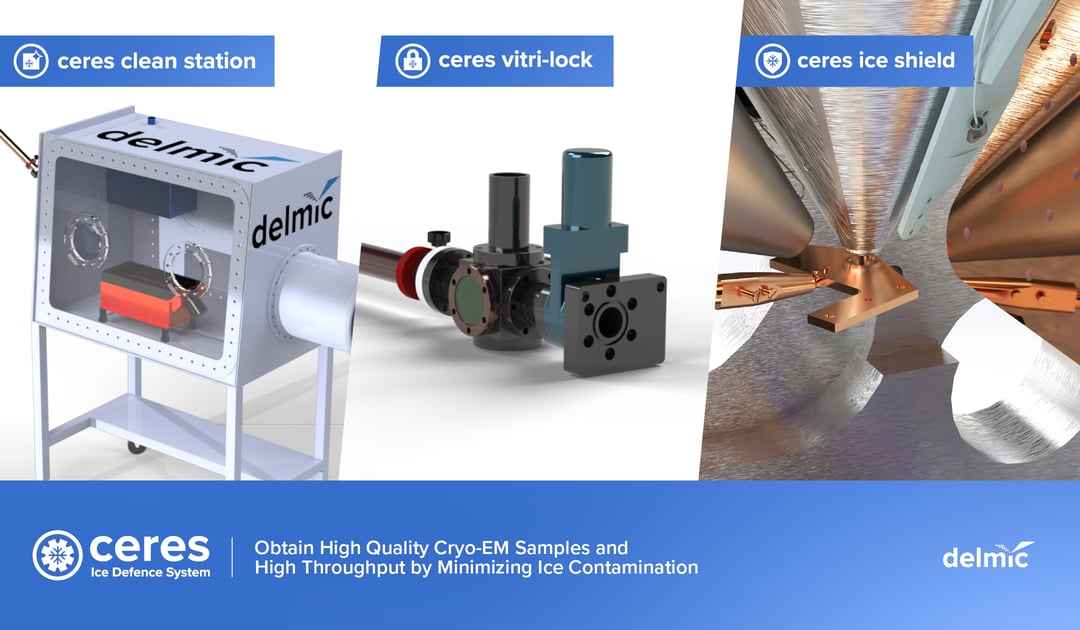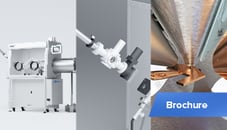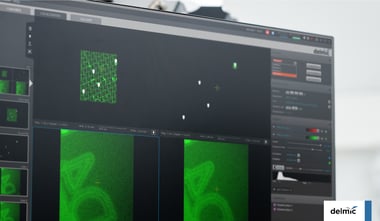Many researchers mention that they struggle with keeping ice away from their precious samples during current lamella preparation workflow. It turns out that almost 40% of cryo samples become contaminated with ice.
In a collaboration with industry experts and top researchers from Max Planck Institute for Molecular Physiology in Dortmund, Germany, we created powerful tools to tackle this challenge. Meet CERES Ice Defence System, which consists of CERES Clean Station, CERES Vitri-Lock and CERES Ice Shield. These three innovative tools will give maximum protection to your cryogenic samples by ensuring a minimal amount of ice contamination at every step of your cryo-EM workflow. CERES Ice Defence System is aimed to clear the way for your cryo-ET workflow to obtain better quality cryo-ET results , higher throughput, and higher resolution.
The prototype of CERES Ice Defence System is innovated by the group of Prof. Dr. Stefan Raunser, Director at the Max Planck Institute for Molecular Physiology in Dortmund (MPI). Following our mission of creating a healthier future, we are so excited to bring the academic technologies into the market, making it accessible for the researchers in the cryo-ET world.

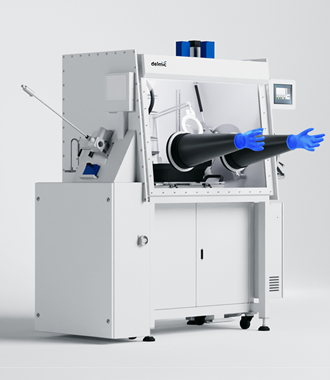
To prevent the deposition of ice crystals on the sample from contaminated liquid nitrogen, CERES Clean Station is designed to provide a less than 1% humidity/100 ppm water environment for sample preparation. With this perfect space-saving environment securing cryo lamellae, you will have no more effort wasted preparing precious samples only to have them destroyed by ice contamination. You're also ensured to enjoy a high agility while handling the fragile samples thanks to the user-friendly holed gloves design.

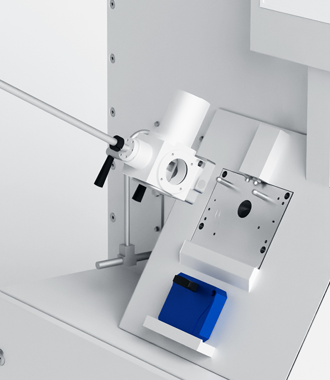
According to the survey we created recently, half of researchers think ice growth during sample transfers is more than problematic for them. To ensure your cryogenic samples stay vitrified during all the transfers, you can now use CERES Vitri-Lock, a high vacuum cryo transfer (HVCT) which promises you a safe cryo sample transfer between the preparation station, fluorescent light microscope (FLM), scanning electron microscope (SEM)/FIB and TEM. Additionally, there is no more rush between stations because CERES Vitri-Lock will keep your samples contamination-free for up to 30 minutes, which is a prolonged 'cold time' compared with other commercially available cryo-transfers.

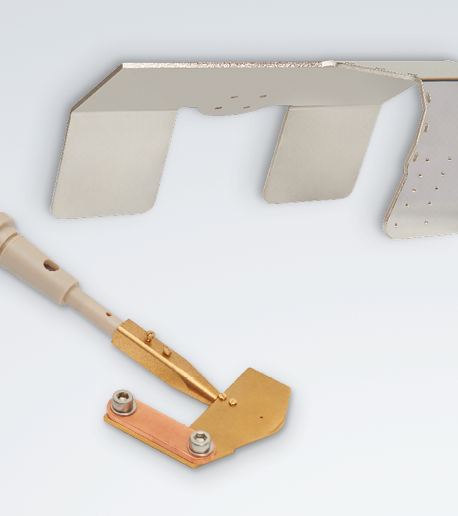
13% of researchers report that parasitic ice growth can also occur during sample thinning, which significantly reduces the quality of resulting data. However, certain ice contamination rates are currently accepted by major cryo FIB/SEM suppliers. CERES Ice Shield operates within the FIB /SEM chamber to give ultimate protection on the sample during the milling process. Coming with a cryo shutter, a cryo shield and an auto refill system, it provides a colder surface within close proximity to the cryo sample and prevents any residual moisture in the chamber to condense on the sample. No need to rush the milling process: you can even leave lamellae in the cryo-FIB/SEM overnight without worrying about parasitic ice growth.
Working with CERES Ice Defence System (For FIB/SEM)
Load plunge frozen samples into Clean Station via the antechamber, perform C-clipping and sample-shuttle assembly on the LN2 cooled preparation table in the chamber, pump Vitri-Lock chamber to high vacuum and then load the sample-shuttle into Vitri-Lock for transfer to the cryo-FIB/SEM for lamellae preparation. When the lamellae samples are prepared, transfer the samples to Clean Station from the cryo FIB/SEM using Vitri-Lock. Use the cassette loading module on the preparation station in Clean Station to load samples with lamellae into the cassette for the downstream cryo-TEM process.
Working with CERES Ice Defence System, you are ensured to focus on gaining more insights into the building blocks of life with ease. Visit our product page to learn about how you can work with CERES Ice Defence System to boost your productivity!
 To know more details about CERES Ice Defence System, please download the brochure below!
To know more details about CERES Ice Defence System, please download the brochure below!
This work is supported by the European SME2 grant № 879673
.png)



